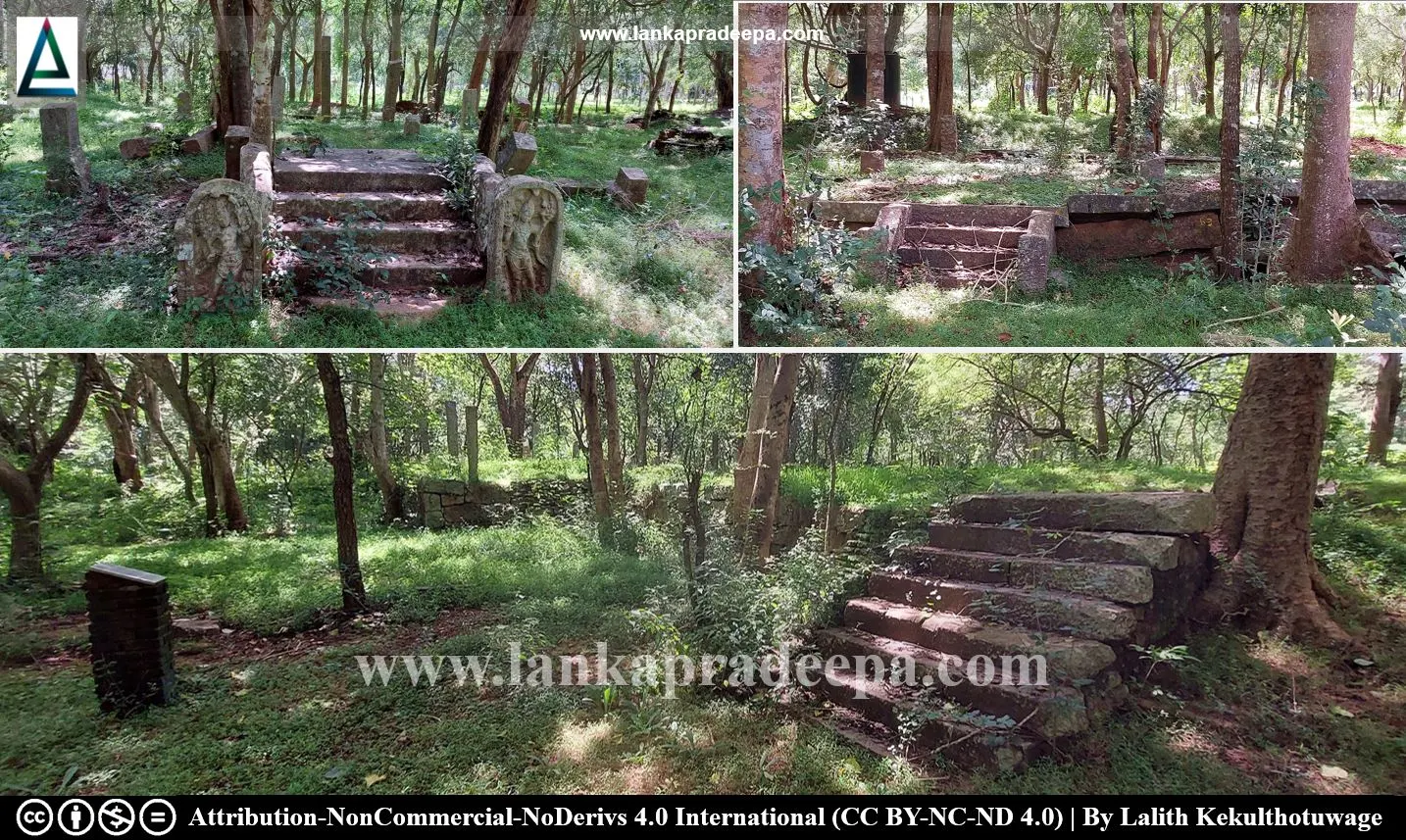
Kapara Mula or Kapara Parivena (Sinhala: කපාරා මූලය, අභයගිරිය) is a ruined site situated in Abhayagiriya Monastery complex in Anuradhapura District, Sri Lanka.
History
Abhayagiriya Monastery as a seat of learning developed independently (Jayasuriya, 2016). By the 7th century, it consisted of four main Mulas (faculties), namely; Uttara Mula, Vahadu Mula, Kapara Mula, and Mahanethpa Mula (Jayasuriya, 2016). Of them, Kapara Mula was the prominent Mula next to Uttara Mula (Wikramagamage, 2004). It was specially set aside for the residing of foreign Buddhist monks and the inscriptions found here are therefore written in Sanskrit, the international language of the region of the time.
Establishment

Kapara Mula is said to have been erected by Dhatopatissa II [(659-667 A.D.) Nicholas, 1963]. Kings such as Aggabodhi IV (667-683 A.D.), and Sena I (833-853 A.D.) made additions and repairs to the development of the Mula (Nicholas, 1963). Inscriptions of the 10th-century record about Maha-Kapara and Kuda-Kapara Piriven and the Kaparamula fraternity at Abhayagiri Viharaya (Nicholas, 1963). An inscription of Mahinda V (982-993 A.D.) names the Kapara-arama and identifies the site [(see the following section: Kapararama Sanskrit slab inscription) Nicholas, 1963]. The daughter of King Vijayabahu I (1055-1110 A.D.) built an image house in the Kappuramula Vihara (Nicholas, 1963).
Kapararama Sanskrit pillar-slab inscription
This inscription was brought to light on 14 July 1854 (Dhammaratana, 2000). It has been engraved on a pillar-slab of rock measuring 4 feet 6 inches (Dhammaratana, 2000). It contains 16 lines of writing written in Grantha script [(except for the last two lines which are in Sinhala script) Dhammaratana, 2000]. The language of the record is Sanskrit, but the last two lines are given in the Sinhala language (Dhammaratana, 2000). The inscription has been dated by scholars to the reign of King Mahinda V (982-1029 A.D.), the last Sinhala king of the Anuradhapura Kingdom (Dhammaratana, 2000; Ranawella, 2004). It is the first and only inscription belonging to the reigning period of King Mahinda V (Ranawella, 2004).The inscription contains some regulations issued in relation to a donation (Dhammaratana, 2000). The donation (a gift of 200 Tamka coins) has been made by a high priest named Samaganandin to provide drinking water to members of the Buddhist monks at the monastery establishment called Kapararama (Dhammaratana, 2000; Ranawella, 2004). This inscription also mentions a lunar eclipse and the date of that event [(14 Sunday in July 995 A.D.) Dhammaratana, 2000].

.
See also
Attribution
#) LankaPradeepa.com extends its gratitude to Lalith Kekulthotuwage for providing the necessary photographs required for this article. All the photos are published here with the permission of the author.
References
1) Dhammaratana, I., 2000. Sanskrit Inscriptions in Sri Lanka: A thesis
submitted to the University of Pune in partial fulfillment of the requirement for the degree of Doctor of Philosophy in Sanskrit.
Department of Sanskrit & Prakrit Languages, University of Pune,
India. pp.402-414.
2) Jayasuriya, E., 2016. A guide to the Cultural Triangle of Sri Lanka.
Central Cultural Fund. ISBN: 978-955-613-312-7. p.23.
3) Nicholas, C. W., 1963. Historical topography of ancient and medieval
Ceylon. Journal of the Ceylon Branch of the Royal Asiatic Society, New
Series (Vol VI). Special Number: Colombo. Royal Asiatic Society (Ceylon
Branch). p.144.
4) Ranawella, G.S., 2004. Inscription of Ceylon: Containing pillar
inscriptions and slab inscriptions from 924 AD to 1017. Volume V, Part
II. Department of Archaeology. pp.286-287.
5) Wikramagamage, C., 2004. Heritage of Rajarata: Major natural, cultural,
and historic sites. Colombo. Central Bank of Sri Lanka. p.100.
Location Map
This page was last updated on 22 October 2023

